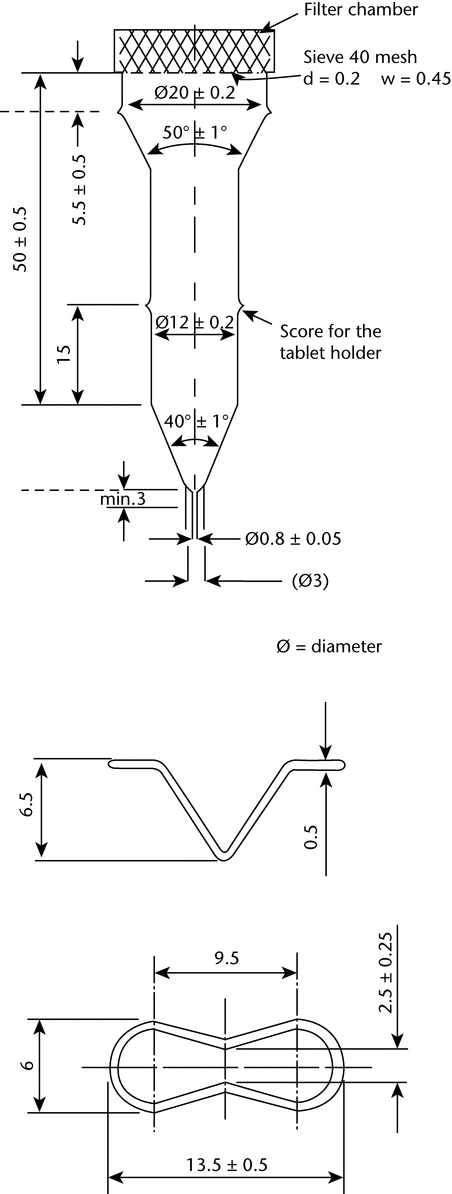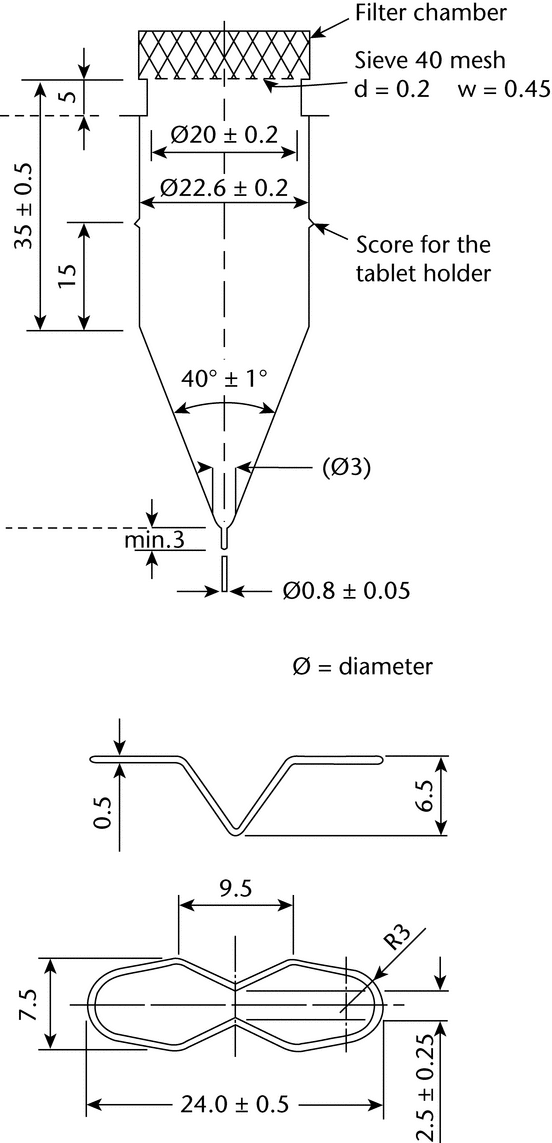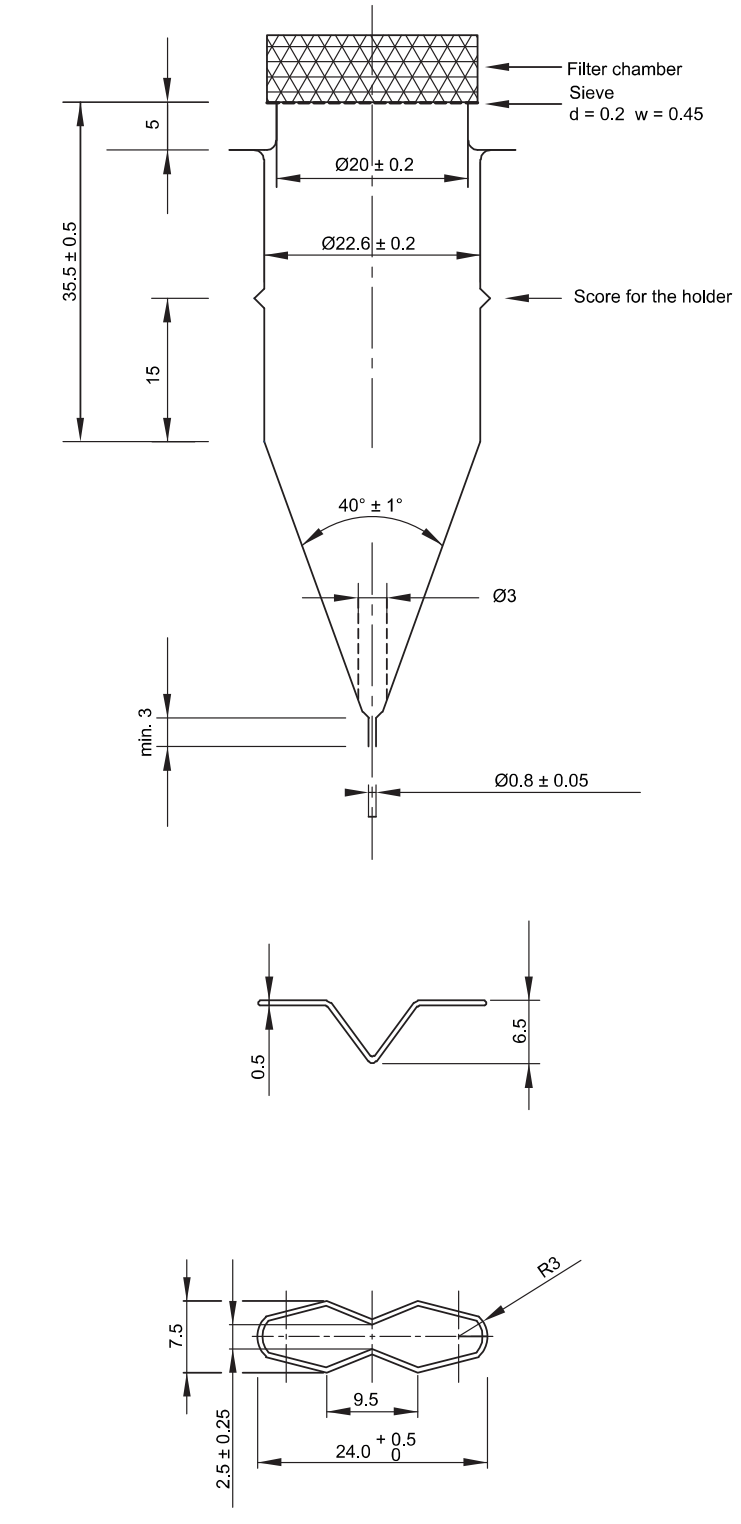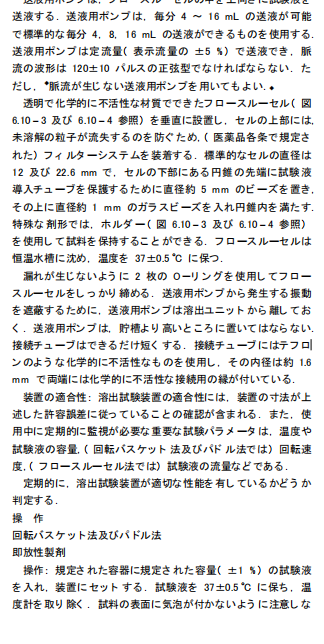Apparatus 4 (Flow-Through Cell)
The assembly consists of a reservoir and a pump for the Dissolution medium; a flow-through cell; and a water bath that maintains the Dissolution medium at 37 ± 0.5°. Use the specified cell size ♦as given in the individual monograph♦ .
The pump forces the Dissolution medium upward through the flow-through cell. The pump has a delivery range between 240 and 960 mL/h, with standard flow rates of 4, 8, and 16 mL/min. It must deliver a constant flow (±5% of the nominal flow rate); the flow profile is sinusoidal with a pulsation of 120 ± 10 pulses/min. A pump without pulsation may also be used. Dissolution test procedures using a flow-through cell must be characterized with respect to rate and any pulsation.
The flow-through cell (see Figure 4 and Figure 5), of transparent and inert material, is mounted vertically with a filter system (specified in the individual monograph) that prevents escape of undissolved particles from the top of the cell; standard cell
diameters are 12 and 22.6 mm; the bottom cone is usually filled with small glass beads of about 1-mm diameter with one bead of about 5 mm, positioned at the apex to protect the fluid entry tube; and a tablet holder (see Figure 4 and Figure 5) is available for positioning of special dosage forms, e.g., inlay tablets. The cell is immersed in a water bath, and the temperature is maintained at 37 ± 0.5°.
Figure 4. Apparatus 4: large cell for tablets and capsules (top); tablet holder for the large cell (bottom). (All measurements are expressed in mm unless noted otherwise.)

Figure 5. Apparatus 4: small cell for tablets and capsules (top); tablet holder for the small cell (bottom). (All measurements are expressed in mm unless noted otherwise.)
The apparatus uses a clamp mechanism and two O-rings to assemble the cell. The pump is separated from the dissolution unit to shield the latter against any vibrations originating from the pump. The position of the pump should not be on a level higher than the reservoir flasks. Tube connections are as short as possible. Use suitably inert tubing, such as polytef, with about a 1.6-mm inner diameter and chemically inert, flanged-end connections.
APPARATUS SUITABILITY
The determination of suitability of a test assembly to perform dissolution testing must include conformance to the dimensions and tolerances of the apparatus as given above. In addition, critical test parameters that have to be monitored periodically during use include volume and temperature of the Dissolution medium, rotation speed (Apparatus 1 and Apparatus 2), dip rate (Apparatus 3), and flow rate of medium (Apparatus 4).
Determine the acceptable performance of the dissolution test assembly periodically.♦The suitability for the individual apparatus is demonstrated by the Performance verification test.
USP Reference Standards á11ñ: USP Prednisone Tablets RS
Performance verification test, Apparatus 1 and Apparatus 2: Test USP Prednisone Tablets RS according to the operating conditions specified. The apparatus is suitable if the results obtained are within the acceptable range stated in the technical data sheet specific to the lot used and the apparatus tested.
Performance verification test, Apparatus 3: [To come.]
Performance verification test, Apparatus 4: [To come.]♦







